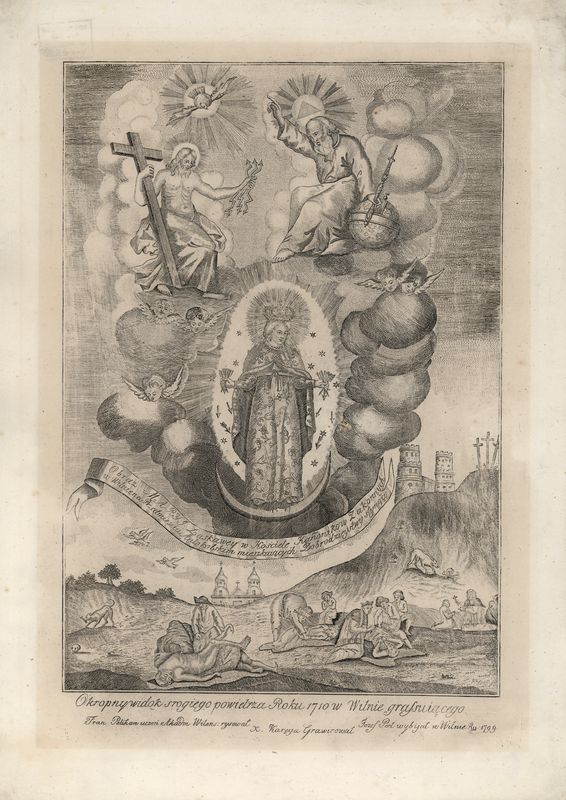The Great Plague, War and Famine

In the early 18th century, amid the Great Northern War, when the armies of Sweden, Russia and Saxony marched through the Grand Duchy of Lithuania and impoverished the country, Lithuania was struck by a plague brought by the merchant ships of Poland and Germany. Although people knew little about the infection and thought it was a punishment from God, the same tactic that we have tried ourselves today were implemented – quarantine. However, nothing helped: people in the growing City of Vilnius lived in poorer sanitary conditions than people in the remote villages of Lithuania. As a result, the infection spread fast. Around 33,700 people died in Vilnius.
If you look carefully around the Eastern façade of St. Johns’ Church on Pilies Street, you will see an epitaph with a skull and crossed bones – it is the place where the ashes of three women who died during the plague were buried. In the Church of St. Peter and St. Paul, you can see a picture by a Franciscan Pelican depicting the plagues in Vilnius in 1710. The Gracious Virgin Mary is pictured protecting people from the plague and other disasters, and holding the broken arrows of God’s wrath in her hands. Plague, war and a cold winter brought another hardship – famine. It was so difficult to get food that starving people sold themselves into serfdom. The city emptied and the ruler Augustus III tried to attract new residents by inviting Jews to settle in Vilnius.
Vilnius in the 18th century – like a phoenix rising from the ashes
- The Great Fires
- The Great Plague, War and Famine
- Jean Emmanuel Gilibert – Lithuania’s father of botany
- Educational Commission
- Laurynas Gucevičius (Stuoka-Gucevičius)
- Mykolas Kleopas Oginskis
- Vilna Gaon or Elijah of Vilna (Eyliohu ben Shloyme-Zalmen)
- Reconstruction of the Town Hall
- Johann Christoph Glaubitz and the Late Baroque of Vilnius
- Uršulė Radvilienė and Vilnius’ First Theatre
